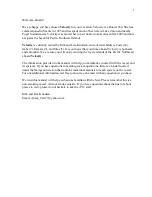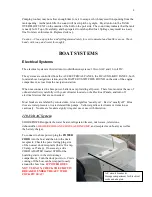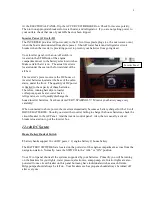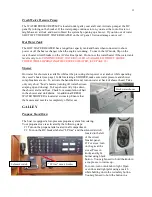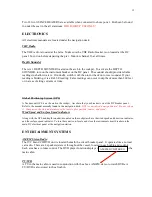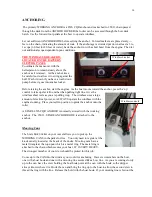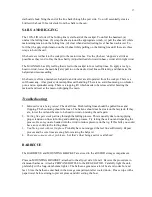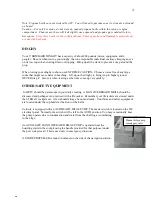
6
Using higher throttle settings will produce very little increase in forward speed but will greatly
increase fuel and oil consumption and the wear on the engine. For this reason, we ask that you limit
the use of higher power settings to real emergency situations.
This boat has a definite prop walk to the port in reverse with not much noticeable affect in forward.
When in reverse, be careful to keep a firm grip on the wheel. Use only low RPMs. .
Starting
Set the STARTER BATTERY SELECTOR SWITCH to ON (See battery section). The switch is
located in the main cabin, next to navigation station, mounted on the side of the engine compartment.
Place shift lever in neutral (straight up in center). Note there is a button under the throttle that
engages the engine when pushed in and releases it when pulled out. Make sure this button is in the
out (release) position when starting the engine.
If the engine is cold, preheat by rotating the ignition
key to “GLOW” for 10 sec. Turn the key to the
START position. After the engine catches, check
your transom for water exiting with the exhaust.
Allow the engine to warm up by idling for 10
minutes at about 1000 RPM before putting under
load.
Do not hold ignition key in START for more than
15 seconds at a time. If the engine does not start the
first time, WAIT for about 15 seconds before trying
again. NEVER TURN THE KEY OFF WHILE
THE ENGINE IS RUNNING! You will do serious
alternator damage. It should always remain on.
Push the button in under the throttle to engage the engine (still in neutral idle position) Pull up on
clutch (part of the throttle handle), move throttle forward for forward motion, or back for reverse.
The clutch is only for changing between neutral, forward, and reverse. The clutch should not be
engaged at high RPM.
Normal cruising speed is 2000 to 3000 RPM.
Shutdown
Place the transmission in neutral and allow the engine to cool
down for several minutes. Usually this is about the amount of
time it takes to secure your lines and plug into shore power.
Pull the engine stop switch located just inside the cabin hatch
against the bulkhead. This cuts off the fuel supply to the
engine. Alarms will sound until the key is switched off.
Engine shutdown switch


